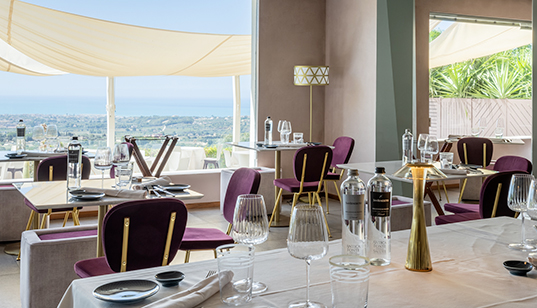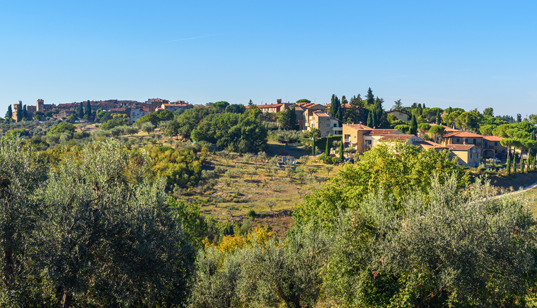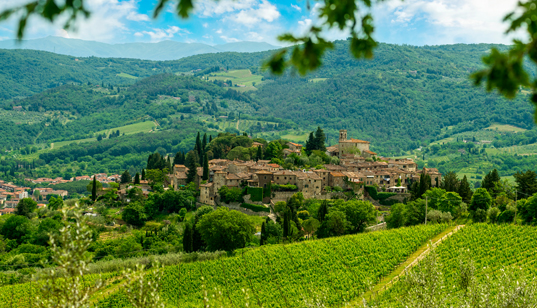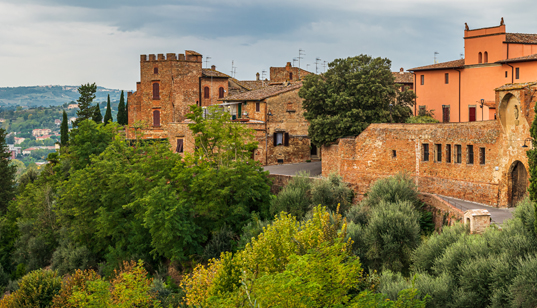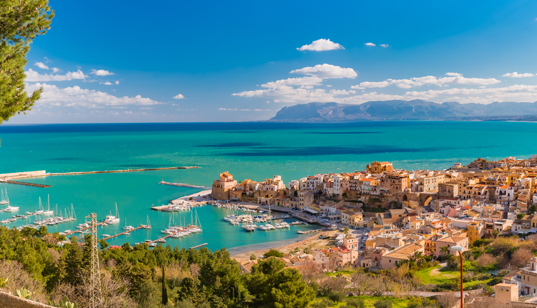The north-western coast of Sicily is studded with sparkling gems that leave indelible memories in the hearts of those who visit, captivated by the beauty of the landscapes, the abundance of artistic and cultural heritage, and the intensity of the scents, flavours and colours.
But there’s a common, yet subtle thread that runs through all the precious mosaics and links the area’s main destinations of interest: the icon of Christ Pantocrator depicted in the background of opulent golden mosaics in his gold and blue robes, a solemn and welcoming image that’s striking in its majesty and capacity to enchant.
A symbol that dominates the apses of the world’s most prominent Orthodox churches and that in Sicily can be found in the Arab-Norman churches of Palermo, Cefalù, Messina and, indeed, in the beautiful Duomo di Monreale (Monreale Cathedral), also known as the Cathedral of Santa Maria Nuova, built by King William II of Sicily between 1172 and 1176.
The cathedral’s internal walls are adorned by 130 Byzantine mosaics depicting episodes from the Old Testament, the New Testament and the lives of the saints.
Considered one of the most important medieval churches in the world, the cathedral is now a UNESCO World Heritage site.
And it is this cathedral, with its imposing, austere exterior, its three towers and its 18th-century Baroque portico with round arches, that is the beating heart of Monreale. The cathedral is situated in the beautiful Piazza Vittorio Emanuele, as is the Palazzo di Città, which was built at the behest of King Roger as his Royal Palace and was further enriched in the 17th century, when it was the seat of the archbishopric, with arches, two-paned mullioned windows, small lava stone rose windows, a balcony and various embellishments that still adorn it today.
This square, steeped in history and bathed in light, and with the splendid Fontana del Tritone (Triton Fountain) proudly standing at its centre, is the ideal place for a break after visiting the cathedral and its famous cloister, and from which to set off on a discovery of the historical centre’s maze of narrow streets with their cultural and artistic charm. Indeed, the Monreale community is one of the earliest examples of a multi-ethnic society, which in the past featured Arabs, Byzantines, Normans and Spaniards, all of whom left their mark on the town in a variety of ways, particularly through its architecture.
Local cuisine, traditional dishes, interesting facts
A conducive climate, fertile soils and the devotion with which the local population care for the land are the secrets to the prolificacy of the Monreale territory and the delightful food it produces.
Chief among these are the traditional S-shaped biscuits, the exquisite bread baked in a wood-fired oven to be enjoyed “cunzato”, i.e. accompanied by organic produce from the local area, and the Sanacore plums PAT (Prodotto agroalimentare tradizionale - traditional agro-food product). There’s also a plethora of restaurants ready to welcome you with their local specialities, all washed down with one of the area’s excellent full-bodied wines.
Where to eat enjoying a bottle
of Acqua San Benedetto
La Botte 1962 - Restaurant and Receptions,
Monreale (PA)















